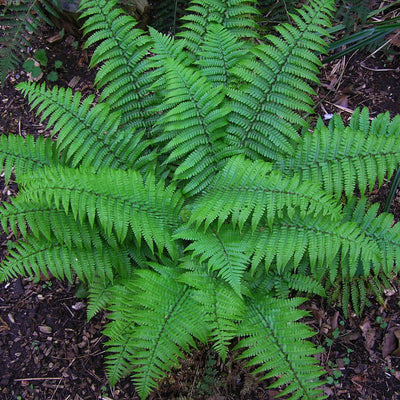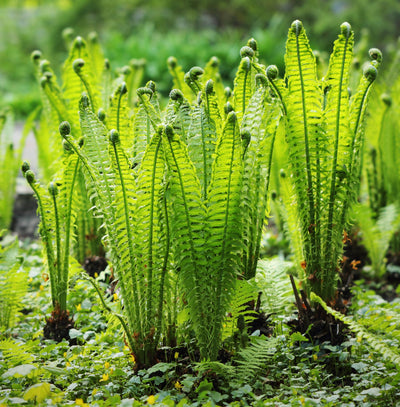The Growth of Native Ferns Within Ecosystems Providing Ecological Benefits
Ferns are versatile plants with many environmental advantages. They've existed in Earth's ecosystems for many millennia, with North America being home to more than 380 species of ferns. The ability to grow in diverse ranges of ecosystems—on the shaded land of the forests and at the peak of a mountain—sets ferns as an integral component of most ecosystems. In this article, we are going to cover the types of ferns present in your backyard and, most importantly, the many benefits these ferns provide to the environment.
Different Types of Ferns
Ferns are diverse in terms of shapes, sizes, and forms, with each variant having the potential to offer varying levels of support to the ecosystems. Let's check some variants of ferns in the backyard.
Christmas Ferns
As with the other types of ferns, Christmas ferns are easy to name as they remain green well beyond winter. In addition, they are commonly found in the shaded parts of woodlands and grow to be about 1 to 2 feet in height.
Hay-Scented Ferns
These ferns reach about 2 feet tall and gently spread between 3-4 feet in width. One unique benefit of Hay Scented Ferns is their capability of repelling deer. Therefore, gardeners who do not want deer nearby will find ferns useful.
Ostrich Ferns
Growing up to 4 feet tall, these ferns are much taller than most other varieties. Their name is derived from the vase-shaped crown, which, along with the large arching fronds, resembles a bird's tail feathers. These ferns are ideal for adding a vibrant green touch to garden beds with a lush backdrop or in shaded areas.
The Function of Ferns and Their Impact on the Environment
To Native Americans, ferns did not only serve decorative, ornamental purposes, and instead, had tremendous importance economically, culturally, and in their worldview. Ferns are delicate and simple, yet they render essential ecosystem services. Here are some of the most interesting ecological functions of ferns.
Water Purification
The root system upland can filter large quantities of water containing chemical toxins and a variety of pollutants, making them dangerous to other living entities. Ferns are especially important in the shady, humid, and other dry, sunny habitats. They are the only plant that can thrive on the most polluted waters and can keep water bodies clean and safe for the living.
Protection And Resting Areas For Animals
Ferns can be both a great place to look for shelter as well as a great place to live for insects, small mammals, and amphibians. The leaves of ferns, also known as fronds, are scientific proof that they can generate a resting area that can be safe and quiet within a sprite's reach. They can also shelter them from predators as well as extreme climatic conditions. In the woodlands, gardens, and forests, ferns serve as sheltering structures for wildlife.
Resources for Wildlife
Ferns provide nesting material for songbirds along with shelter. Leaf miners and other insects eat ferns, and spiders use the curled tips of the fronds as egg-sacs and nursery ferns.
Soil Health and Containment Remediation
Ferns absorb heavy metals and other harmful constituents of soil, which is a very reliable way to monitor and recover contaminated ecosystems. It works to make the soils healthier to ensure that meadows and forests never stop growing and flourishing.
Combatting Climate Change
Much like other plants, ferns take up carbon dioxide and other gases during the process of photosynthesis, subsequently helping in the reduction of greenhouse gases in the atmosphere. They play a critical role in the stabilization of Earth’s temperature and in combatting climate changes.
Why Should You Plant Native Ferns in Your Yard?
From a garden or homeowner’s perspective, the question, “Do ferns enhance the beauty of my garden?” would definitely receive a positive response. Ferns serve both functional and aesthetic purposes. Native ferns can serve to improve the condition of the garden by soil health preservation, providing shelter for animals, and enriching the garden’s biodiversity.
Ferns need shade to grow and are relatively maintenance-free after they are established. Ferns are also unique plants that can liven up and bring life to the lower areas of a garden. Protection of native ferns also helps to protect and preserve the ecosystem in the area by nurturing local wildlife as well as promoting environmental sustainability.
Check Out More Types of Ferns and Native Plants at TN Nurseries
Is your garden missing native ferns? How about a beautiful fern to add to your garden? TN Nursery offers a wide selection of native ferns as well as plants which are guaranteed to benefit your surroundings. Whether you wish to have a wonderful hardy Christmas fern or a beautiful ostrich fern, TN nurseries have all that you require to improve your landscape. Start shopping. Help your garden become a direct source of wildlife.
FAQs
How do ferns benefit the environment?
Ferns are considered helpful to the ecosystem in a variety of ways. They act as natural water filters, purifying the water as well as the ground by removing toxins. Ferns are also an important part of an ecosystem, as they provide food and shelter for wildlife and contribute to biodiversity. Ferns are important in the fight against global warming by capturing and storing carbon dioxide.
Are ferns good for the forest?
Absolutely, ferns are indeed helpful in relation to forests. They help to keep soil in good condition and healthy by preventing erosion, providing water filtration, and adding ground cover. Ferns also enrich the habitat for many forest-dwelling wildlife as well as insects.
What are the indigenous uses of ferns?
Ferns were used in the old days as food like the fiddlehead ferns, medicinally, for basket weaving, or for other craft materials. They were used for various purposes, and in some places, they were used in ceremonies.
What is the impact of ferns on the ecosystem?
Ferns in an ecosystem promote soil health, provide water filtration, assist in the maintenance of local wildlife, and are beneficial to the ecosystem as a whole. Ferns provide vital ecosystem services like habitat, nutrient cycling, and carbon capture.
Are ferns good to have in the yard?
Ferns add aesthetic value to a yard and require minimal effort in maintenance. They enhance soil health, are good for local wildlife, and native ferns grow well in the shade. Ferns are ideal for gardens to create green, lush undergrowth.
What do ferns give back to the ecosystem?
Ferns help improve soil health, provide wildlife shelter, assist in water filtration, and help purify the air by removing toxins. They are also important in the ecosystem for their carbon sequestration abilities to help with climate change.




